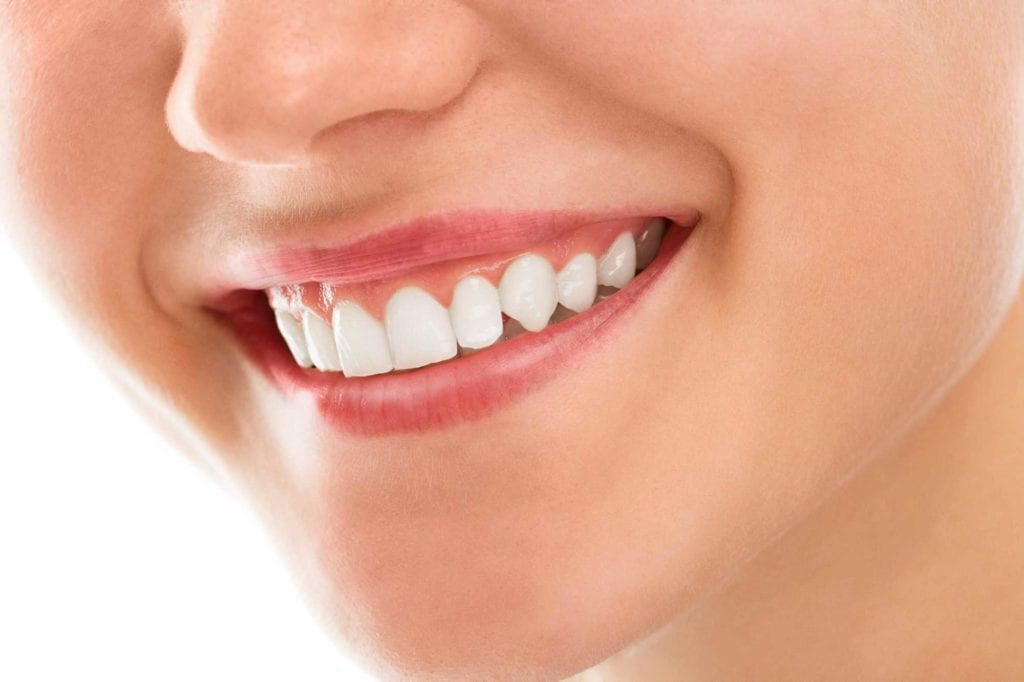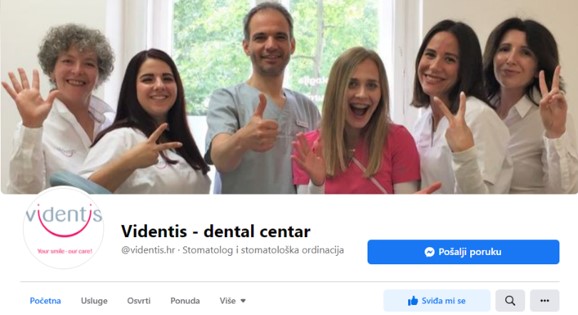Periodontal disease: gingivitis
Gingivitis is a mild inflammation of gingiva, i.e. dental flesh. Inflammation is caused by toxins produced by bacteria in our oral cavity. The signs that our gums are affected by gingivitis are swollen dental flesh, bleeding of dental flesh when touched and blood in the contents that we spit out from the mouth while brushing the teeth.
Healthy gingiva, or dental flesh, is bright-colored, firm and does not bleed when brushing teeth. Inflammable gingiva is red and bleeds to the slightest stimulus, while we brush our teeth or clean them with dental floss.
Simple gingivitis can be easily and completely cured. It is enough to fix your oral hygiene. However, long-term neglection of gingivitis symptoms expose us to the risk of serious illness, periodontitis.

Gingivitis causes
There are a number of factors that contribute to the development of inflammation of the dental flesh or gingivitis.
The main cause of gingivitis is poor oral hygiene. Due to irregular or poor oral hygiene plaque is accumulated in the oral cavity.
Plaque is a colorless layer of saliva, minerals, and food residues. It is an ideal habitat for the development of bacteria which excretes toxins by digesting food. Toxins irritate dental flesh and cause gingivitis.
Gingivitis is most commonly developed between the teeth. Basically that is the spot on which we least maintain hygiene so the plaque lasts the longest.
There are also other factors contributing to gingivitis which are associated with the oral cavity. For example, it may be stimulated by bite disorder, food retention between the teeth, presence of dental calculus and caries, but also poor fillings and constant dryness of the oral cavity (xerostomia). However, these are secondary causes and have a secondary role.
It is believed that hormonal changes can also cause gingivitis. Thus, gingivitis can occur in puberty, during menstruation, pregnancy, and menopause.
Gingivitis may mark early stages of autoimmune disease development such as diabetes, HIV, and Chron disease, and may also indicate other causes such as vitamin C deficiency, leukopenia, leukemia, anemia, exposure to heavy metals, etc.
Gingivitis may be affected by many other causes and various medicines, such as oral contraceptives, some antiepileptic drugs and elevated blood pressure.
Types of gingivitis
Simple gingivitis is characterized by enlarged space between the gums and the teeth . As the disease progresses, thickening, redness, and swelling of the dental flesh occur and gums become sensitive and bleed easily.
Simple gingivitis is not painful and in this described form can be kept for years. Usually we do not notice it before the gums start to bleed, but it is dangerous because it can develop into periodontitis.
Periodontitis is also a type of dental flesh disease. It occurs when an acute gingival inflammation above the tooth which is just emerging. It often occurs when a wisdom tooth grows and can lead to an infection or abscess.
Pericoronitis may occur later, after the tooth has appeared, until the tooth is completely grown and the gingiva around it has taken an appropriate form.
Unlike simple gingivitis, desquamative gingivitis is painful. This occurs due to a damaged gingiva which lacks the outer layer of cells which protect it from food particles. Dental flesh therefore becomes dark red, painful and bleeds easily. Desquamative gingivitis often occurs in menopause.
Gingivitis treatment
Very often, we find several causes of gingivitis in patients. Therefore, each treatment is individual, depending on the condition and cause of the disease and on the patient’s life habits.
Simple gingivitis can be easily and completely cured with proper oral hygiene.
Tips for treating simple gingivitis:
- toothbrush change: give advantage to soft brushes
- change the way you brush your teeth: do not rub the dental flesh with toothbrush
- change the way you brush your teeth: do not rub the dental flesh with toothbrush
- cleaning the dental calculus as needed
- rinse mouth with an antibacterial mouthwash.
Professional treatment of gingivitis
More complex gingivitis needs to be treated professionally. If the cause of gingivitis is a systemic disease, it is primarily necessary to treat and control the underlying disease. The case is similar with hormonal disorders.
First you need to establish the diagnosis and determine the existence of red and sensitive dental flesh. A step often taken is to measure the depth of so-called pockets, that is, the distance between the lower boundary of the dental flesh and the upper level of the dental flesh. Pockets up to 3 mm in depth are considered regular.
Professional treatment of gingivitis involves cleaning of gingiva, repair or replacement of poor fillings, and may also require removal of excess gingiva.
In addition, it may be advisable to stop using medicines that affect the gingiva, of course, with permission of the physician who prescribed the medicine.
In case of pericoronitis, it is necessary to remove the deposits under gingiva which are causing the infection, and in addition to taking antibiotics, flushing with saline and other solutions may be recommended.
Do you have a problem or just want to gather more information?
If you have any questions, please feel free to contact us.
Our friendly staff will answer all your questions.



